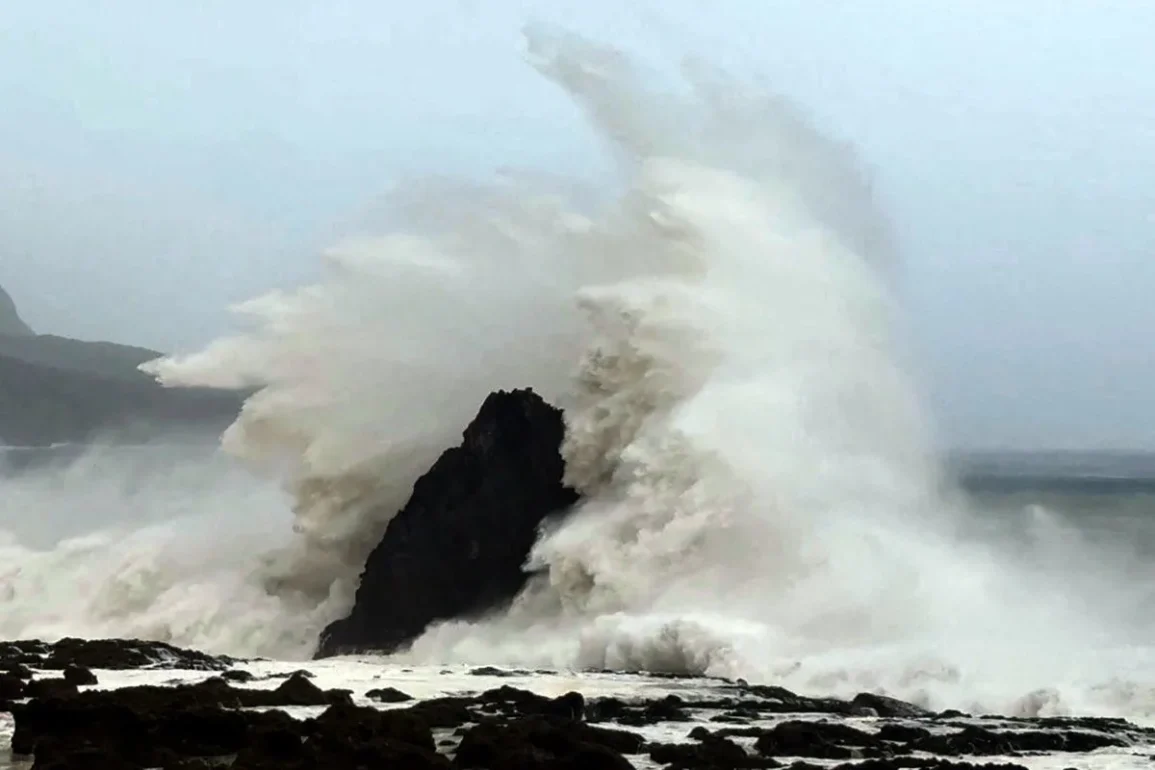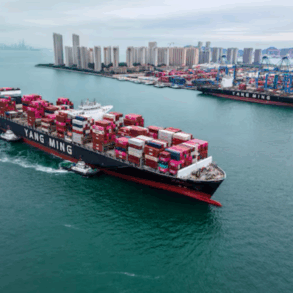Super Typhoon Ragasa, one of the most powerful storms of 2025, has left a trail of destruction across the Philippines, Taiwan, and southern China, claiming lives, displacing millions, and causing widespread damage. With hurricane-force winds and torrential rains, the storm has disrupted major cities, triggered deadly floods, and tested the resilience of regions accustomed to typhoons.
Devastation in Taiwan
In Taiwan, Ragasa’s impact was catastrophic, particularly in Hualien County. A natural dam, formed by a July landslide, collapsed under the storm’s heavy rainfall, releasing 68 million tons of water into Guangfu township. The flooding swept away cars, inundated homes, and destroyed a large bridge, leaving at least 14 people dead and 124 others missing, according to local officials. Rescue efforts are ongoing as teams search for survivors amidst the wreckage.
Authorities had warned for weeks that the dammed lake could overflow by October, but the typhoon’s intense rainfall accelerated the disaster. Kuo-Lung Wang, a professor at Taiwan’s National Chi Nan University, noted that officials had monitored the situation but deemed it unfeasible to remove the dam barrier. Despite evacuation advisories, the sudden collapse caught many off guard, amplifying the tragedy.
Southern China Braces for Impact
As Ragasa moved westward, it battered southern China’s Guangdong province, home to megacities like Shenzhen and Guangzhou. Nearly 1.9 million people were evacuated by Tuesday night, and over 10,000 vessels were relocated to safer waters, according to China’s state-run Xinhua news agency. The storm’s winds, reaching up to 181.44 kilometers per hour (112.4 mph) in Shenzhen, caused massive waves that flooded coastal areas.
In Hong Kong, a global financial hub, the storm prompted the highest typhoon warning signal (T10), shutting down schools, businesses, and public transit, including the city’s busy airport. Storm surges, with waves up to five meters high, shattered glass doors at the Fullerton Ocean Park Hotel and pounded coastal promenades. No injuries were reported at the hotel, and the government quickly mobilized resources to respond. Hong Kong’s sophisticated $3.8 billion drainage system, designed to combat flooding, was put to the test as the city faced gusts of 168 kilometers per hour (104.39 mph).
Philippines Faces Initial Blow
Ragasa, also known as Typhoon Nando in the Philippines, first struck the northern Philippines as a Category 5-equivalent storm. Its massive size was visible from space, with satellite images capturing its swirling eye. The storm felled trees, tore roofs off buildings, and forced thousands into evacuation centers. At least four deaths have been reported, though officials are still verifying these numbers, according to the Philippine News Agency.
Climate Crisis Amplifies Storm Intensity
The Philippines, Taiwan, and southern China are no strangers to typhoons, but scientists warn that human-caused climate change is making these storms more unpredictable and severe. Ragasa, the ninth typhoon to hit Hong Kong this year, underscores the region’s vulnerability. The City University of Hong Kong notes that the city typically sees about six typhoons annually, making 2025 an unusually active season. As the world warms, storms like Ragasa are becoming more destructive, posing greater challenges to even the most prepared regions.
Preparedness and Response
Despite the devastation, the affected areas have robust systems to mitigate typhoon impacts. Hong Kong and Guangdong have invested heavily in infrastructure, such as drainage networks and early warning systems, which have saved countless lives compared to decades past. In Hong Kong, residents like Terence Choi prepared by stocking food, while in coastal areas like Lei Yue Mun, government workers placed sandbags to protect against storm surges. In Guangdong, over 38,000 firefighters remain on standby to respond to emergencies.
As Ragasa weakens, another storm, Opong, is intensifying in the Philippines, signaling that the typhoon season is far from over. The resilience of these communities will continue to be tested as they recover and prepare for future challenges.








